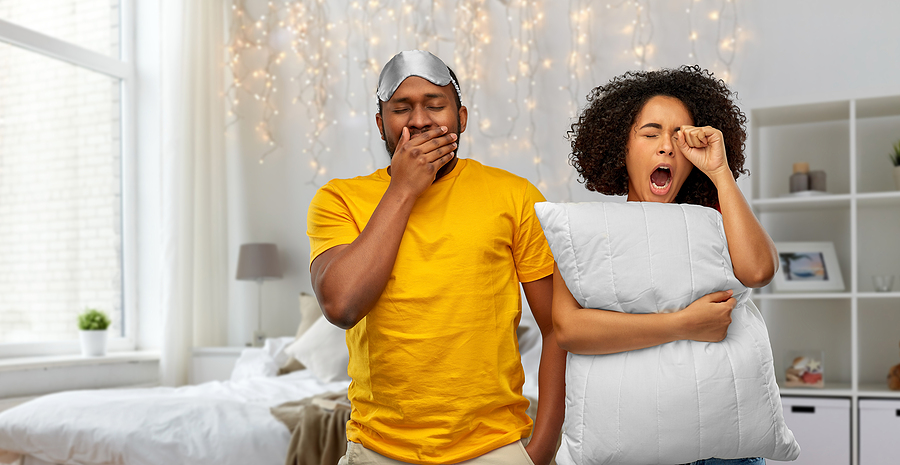
Updated December 5, 2021
by Tara E.
What is the best position for back pain? In order to get a good night’s sleep, you may believe that you need to have a perfectly clean and clutter-free bedroom. But did you know that the position you sleep in can also make a big difference when it comes to your comfort? If you’re dealing with back pain, finding the best sleep position for back pain is key!
Let’s take a look at the best sleep position for back pain relief.
Sleeping Positions for Back Pain
Some of these sleeping positions are fairly easy to do and only require you to adjust how you lay in bed. Others may require you to make an investment in a few everyday products to achieve comfort.
Fetal Position for Back Pain Relief
The next time you experience back pain, you might try lying in the fetal position for relief. In this position, you lie on your side with your knees raised towards your chest. By lying on your side in this position and bending your spine, you enable the spine to open slightly, reducing pressure, and creating an opportunity for re-hydration. This sleeping position works well for those who might have a herniated disc. Add a knee pillow between your knees to create support and natural body alignment.
Body Pillow Between Your Knees
Body pillows are another way to relieve back pain to create better spine alignment. Some sufferers of back pain report significant neck, hip, and back pain relief when using body pillows. Pregnant women may especially benefit from this extra source of support, alleviating the common aches and discomfort that can accompany pregnancy.
Lie on Your Back with Your Knees Raised
You can also lie on your back with your knees raised. By moving your knees closer to your chest, you inadvertently distribute the weight. This action allows you to shift the weight from your pelvis which aids in providing some relief to your back. You can add a pillow beneath your knee joints to boost support and further support spine alignment.
Sleeping on your back is an excellent way to boost lumbar support. Lumbar pillows can also help to enhance the quality of your sleep experience offering an alternative approach to using a traditional pillow to relieve pressure for your lower spine.
Pillows for Neck Alignment
Another step you can take is to choose a sleeping position and pillow that promotes good neck alignment. If neck pain frequently accompanies your back pain, sleeping on your side or your back is best. You should take care to avoid sleeping on pillows that are hard or a bit too puffy or high. These types of pillows often have very little give and may strain your neck due to over-flexing.
There are thousands of pillows on the market to choose from that will deliver positive results. There are anecdotal reports that standard pillows with memory foam that conforms to the contours of your head and neck may be effective in reducing your pain or discomfort.
Advertisement
The Sleeping Position You Should Avoid for Back Health
There is one position that you should avoid at all costs and that is sleeping flat on your stomach. Did you know that in order to sleep flat on your stomach, you must turn your head 90 degrees in order to breathe? What’s the big deal in doing this? The long-term effect is that basically, you can get your body out of whack by doing this creating problems that range from stretched neck and shoulder muscles to stretched ligaments. The effects of this result may later exhibit themselves in a neck that is short on one side and causing discomfort and pain.
Memory Foam Pillows for Back Pain
The next option is that of memory foam pillows. As a sufferer of lower back pain, this author can attest that memory foam pillows and mattresses are the way to go –or at least they were for her. After investing in a rather affordable mattress, the lower back pain that I was experiencing all but abated six to eight weeks after purchase. This coupled with the purchase of memory foam pillows created a new world of restful sleep!
There you have it! Two positions and a worthy investment tip that just might provide you with a bit of relief the next time you experience lower back pain.



